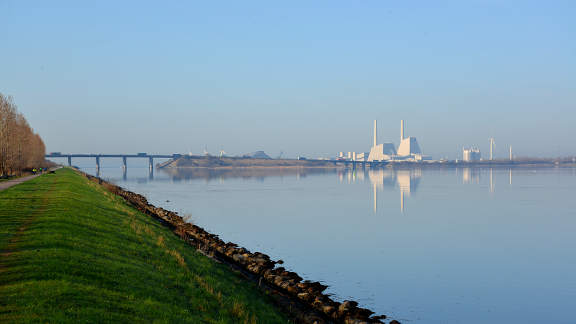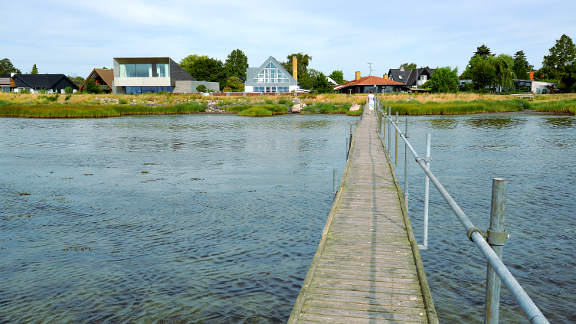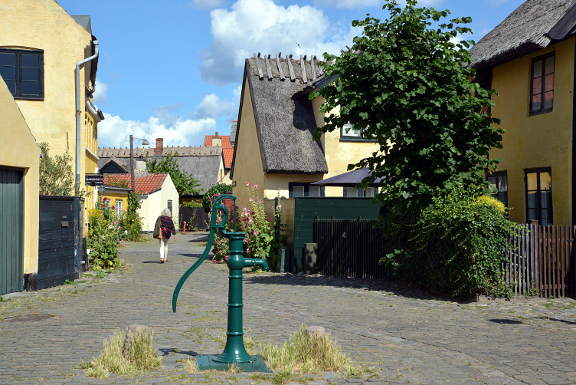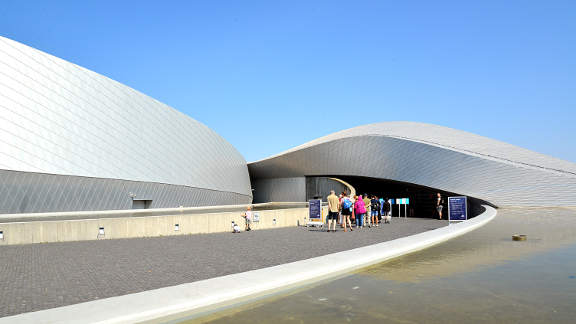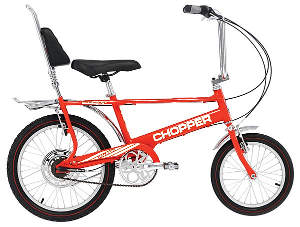Enough of Hygge - 8 - Amager
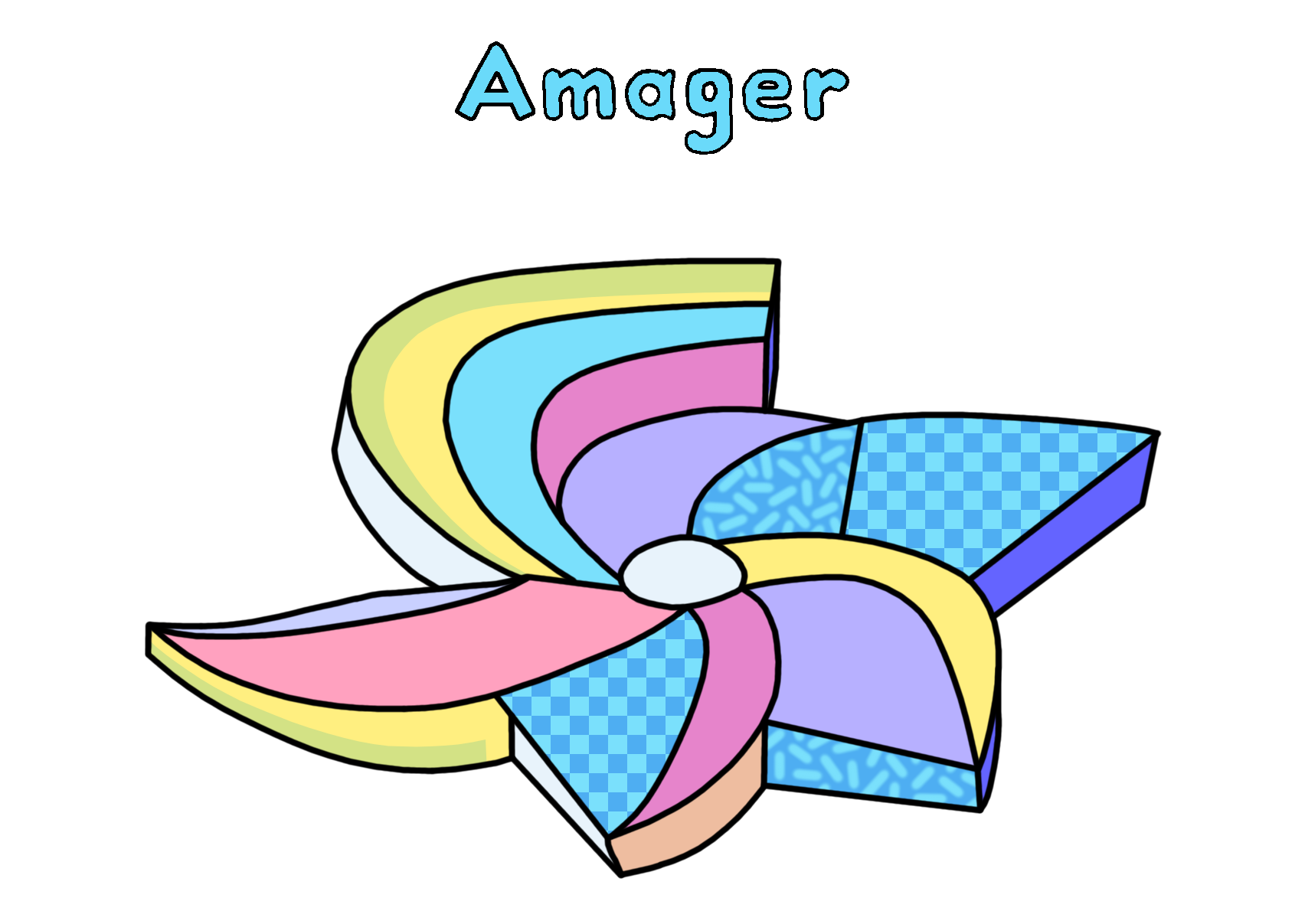

Amager nature park.
Dragør.
Amager beach park.
Introduction
Amager is the island to the south and east of Copenhagen city centre. To the north are the districts of Christianshavn and Refshaleøen, which were covered in an earlier tour. Copenhagen airport lies in the east of Amager, and of course "The Bridge" to Sweden links Amager to Malmö.
There are no S-train lines on Amager, although the Metro lines M1 and M2, and buses provide public transport links. The more recent railway line to Malmö has stations at Ørestad, Tårnby and the airport. Taking bicycles on the Metro or main line trains requires an extra ticket to be purchased. The original railway line to Dragør is evidenced by the old railway station buildings next to Kastrup metro station and by some extant tracks running alongside Kløvermarken.
Today Amager is a tear-drop shaped island, but it hasn't always been so. Maps from 1700 show a wedge-shaped island with the whole of what is now Amager Nature Park missing, and containing only a few isolated settlements, although Dragør had been an important fishing port for centures before. It was only after 1940 that the land reclamation began in earnest.
Amager has had a chequered past, it has been known as Lorteøen (sh*t island) because it was used to dump latrine waste. The area that is now Amager Common (Fælled) used to be a military firing range, and was also used for executions. And where there are now high-class harbourside apartments in Islands Brygge there had once been a rubbish landfill site.
But don't let all that put you off - today it is a very diverse area with huge swathes of open space on the doorstep of a major european capital city. Amager is on an important bird migration route and the bird-watchers are out in force in spring and autumn.
The following tour blends the sea with the open spaces of Kalvebod Fælled (Amager Nature Park), the historic port of Dragør and the new beach of Amager Strandpark. Note: this tour is quite exposed to the wind so can be hard work in a stiff breeze. It is also the longest of these tours with few options for escape in its southern half.
Note: The map (above) and photographs can be enlarged by clicking on them (opens in a new browser tab). On the map north is 0° clockwise, i.e. at 00:00 on an old school analogue clock.
![]() tart:
tart:
We will start at the Dybbølsbro Station at the junction of Ingerslevsgade and Dybbølsbro (GPS 55.66513 12.55903).
![]() Looking left from the exit of the station you will see the mass of the
Fisketorvet shopping mall. Head towards this on the wide cycle lane.
Looking left from the exit of the station you will see the mass of the
Fisketorvet shopping mall. Head towards this on the wide cycle lane.
Just before the shopping mall turn left onto an elevated cycle way - this is the reknowned Cycle Snake (Cykelslangen) - keep to the right and enjoy the ride. At the bottom of the Snake continue over the bridge (Bryggebroen) that crosses the harbour. There are fine views left towards the City and right towards Sluseholmen.
![]() 1
At the far harbourside turn right underneath the Gemini
Residences on a cobbled section of quay
(GPS 55.66116 12.56818).
1
At the far harbourside turn right underneath the Gemini
Residences on a cobbled section of quay
(GPS 55.66116 12.56818).
Bryggebroen to Slusen:
The first 3 km follows the Havneringen route to Slusen. At the small marina turn right to join the road (Islands Brygge). Continue southwards passing the many new harbourside apartment blocks. At a small dead end (for cars) continue to a paved area, next to a cafe, where it opens out at a lagoon (GPS 55.65500 12.56469). There is an artificial beach and bathing here. Cross the bridge and pass the wooden boat houses on Rundholtsvej. Where Rundholtsvej bears left carry straight on into a small car park and then follow the small signpost, indicating the cycle routes 6 and 101, to the right onto a gravel track (GPS 55.65339 12.56345). The track runs along the side of the harbour with views across to the offices and residential areas of Sydhavn.
To the left are the Nokken and Sønderbro Haveforeningen (H/F) (think allotments but with holiday homes) and further east the vast common land of Amager Fælled. After 1km the track passes a "hill" on the left which can be climbed from either end to enjoy the view. After crossing a drainage ditch the track meets the more substantial track of the C94 "cycle superhighway" (GPS 55.64204 12.55585). Turn right here, then follow the route 6 (and C94) round to the left. 50m further turn right (signposted route 6) (GPS 55.64140 12.55452) to pass under the road. After another 200m the track goes under the railway to pop up on the sea inlet opposite a marina.
Kalveboderne:
![]() 2
There is a straight run for over 1 km to where Kalvebod bay opens up.
On the far side of the bay is Valby and Kystager parks, which we will be
visiting on a later tour.
A futher 1 km brings you to "Byskoven", a new leisure zone
(GPS 55.62302 12.52507).
Continue straight ahead for another 1 km brings you to
a slight rise where you pass under the motorway.
On the south side of the bridge is a fence, gate and cattle grid
(GPS 55.61352 12.51324),
2
There is a straight run for over 1 km to where Kalvebod bay opens up.
On the far side of the bay is Valby and Kystager parks, which we will be
visiting on a later tour.
A futher 1 km brings you to "Byskoven", a new leisure zone
(GPS 55.62302 12.52507).
Continue straight ahead for another 1 km brings you to
a slight rise where you pass under the motorway.
On the south side of the bridge is a fence, gate and cattle grid
(GPS 55.61352 12.51324),
![]() 3
Go over the cattle grid (or through the gate) to take the tarmac track
down to the waterside again. To the left, over the dyke, is the vast
expanse of reclaimed land that is Amager Nature Park, and to the right
the sea opens out into Koge Bay. The track curves south and then south-east
for 2.5 km until the first of the wooden bird hides appears on top of the dyke
(GPS 55.59107 12.51456),
There is room to pull in and take a break and to take a look over the
lakes and marshes of the nature park. To the east, over 8 km away, is
the airport.
A straight run of 1.5 km brings you to the second bird hide
(GPS 55.57843 12.52656),
3
Go over the cattle grid (or through the gate) to take the tarmac track
down to the waterside again. To the left, over the dyke, is the vast
expanse of reclaimed land that is Amager Nature Park, and to the right
the sea opens out into Koge Bay. The track curves south and then south-east
for 2.5 km until the first of the wooden bird hides appears on top of the dyke
(GPS 55.59107 12.51456),
There is room to pull in and take a break and to take a look over the
lakes and marshes of the nature park. To the east, over 8 km away, is
the airport.
A straight run of 1.5 km brings you to the second bird hide
(GPS 55.57843 12.52656),
![]() 4
Then the dyke turns east and a third bird hide appears at the southern
most point of the nature park
(GPS 55.57259 12.54057),
A further 1.5 km east the track rises to the top
of the dyke where there is a junction with a gravel track on the right.
(GPS 55.57605 12.56333),
4
Then the dyke turns east and a third bird hide appears at the southern
most point of the nature park
(GPS 55.57259 12.54057),
A further 1.5 km east the track rises to the top
of the dyke where there is a junction with a gravel track on the right.
(GPS 55.57605 12.56333),
Kongelunden to Søvang:
![]() 5
The next section through the forest is well signposted. If in doubt
follow the arrows for route 80 and Dragør.
Go through the fence (over the cattle grid or through the gate), turn
right to descend the gravel track then curve left (signposted Fasanstien)
to enter the forest.
Continue straight over a gravel crossroads to head south-east into
the forest. Follow this main track as it weaves through the forest,
crossing a tarmac track, until you eventually pop out into a car-park
on Skovvej
(GPS 55.57232 12.58111),
From the right-hand exit of the car-park the gravel track (called Fasanstien)
continues on the other side of the road, signposted to
Dragør (route 80).
5
The next section through the forest is well signposted. If in doubt
follow the arrows for route 80 and Dragør.
Go through the fence (over the cattle grid or through the gate), turn
right to descend the gravel track then curve left (signposted Fasanstien)
to enter the forest.
Continue straight over a gravel crossroads to head south-east into
the forest. Follow this main track as it weaves through the forest,
crossing a tarmac track, until you eventually pop out into a car-park
on Skovvej
(GPS 55.57232 12.58111),
From the right-hand exit of the car-park the gravel track (called Fasanstien)
continues on the other side of the road, signposted to
Dragør (route 80).
The track continues through the forest until it meets another road (Kalvebodvej). Turn left along the road and after 50m turn right again onto another forest track (Fasanstien), signposted to Dragør (route 80). (GPS 55.56976 12.59077), The track winds through more forest and crosses a minor road (Skolevej) before entering an open field with a large boulder circle. Hidden in the trees is the Søvang troll (GPS 55.56935 12.59937), Continue along the track, across another minor road (Fælledvej) (GPS 55.56780 12.60376), until you suddenly pop out onto the coast west of Søvang (GPS 55.56480 12.60806),
![]() 6
Søvang is a dormitory town with houses that crowd
towards the sea.
The track runs along the foreshore with views into peoples gardens or out
into the Øresund. A free-for-all of architectural
styles is apparent in the houses. Because of the shallow waters two bathing
platforms stretch way out into the sea
(GPS 55.56692 12.61920),
6
Søvang is a dormitory town with houses that crowd
towards the sea.
The track runs along the foreshore with views into peoples gardens or out
into the Øresund. A free-for-all of architectural
styles is apparent in the houses. Because of the shallow waters two bathing
platforms stretch way out into the sea
(GPS 55.56692 12.61920),
Dragør:
Where the houses of Søvang end, follow the gravel track across heathland, slightly inland from the sea. A ditch and track (St Magleby Strandvej) are crossed (GPS 55.57629 12.62796) before a caravan park and Kolonihaven (summer houses) appear on the left.
Another long wooden bathing platform stretches out into the Øresund, before the track turns sharply left, signposted Dragør route 80, and meets a road (Søndre Strandvej) (GPS 55.57874 12.64021). Turn right onto Søndre Strandvej and breeze along. After about 1 km houses start to crowd in from the left but the views out to sea are still dramatic (GPS 55.58323 12.65841). Continue in the same fashion for 1.5 km until houses appear on the right.
Where the road turns north and the cycle lane disappears turn right at the crossroads with Drogdensvej (signposted Dragør gamle by and Dragør Havn) (GPS 55.59070 12.67020). And where the vista opens up to grass turn left onto Strandlinien (GPS 55.59040 12.67388), (signposted Dragør gamle by). A visit to Dragør fort can be made by carrying straight on at this junction. Keep to the right where the road splits and 50 m further on turn left onto Strandlinien (GPS 55.59142 12.67500).
![]() 7
A short run 250 m north brings you into the heart of old
Dragør harbour. The old town behind the harbour
is a picturesque maze of cobbled streets, with yellow houses and red
or thatched roofs, well worth exploring on foot. The town was a significant
fishing port for centuries, and before "The Bridge" was built to Sweden
the site of the ferry terminal across the Øresund.
7
A short run 250 m north brings you into the heart of old
Dragør harbour. The old town behind the harbour
is a picturesque maze of cobbled streets, with yellow houses and red
or thatched roofs, well worth exploring on foot. The town was a significant
fishing port for centuries, and before "The Bridge" was built to Sweden
the site of the ferry terminal across the Øresund.
The road ahead is "no entry" (GPS 55.59398 12.67444), and the streets into town are pedestrian only. So dismount your cycles and walk down Kongevejen (to the left of the Strand hotel) past the boutiques to soon enter Neels Square, with its circular urban seating. If you can drag yourself away from the ice cream shop and bakery turn right across the square, and then zig-zag right and left to enter another small square (Jan Timanns Plads) with its decidedly quaint cinema (Biograf). On the far side of the square a cobbled street Lybækstræde cuts between houses on the left (GPS 55.59442 12.67295).
Take this left branch and follow the narrow cobbled street as it changes its name to Løkkestien and bends left and right onto the tarmac of Øresunds Allé. Keep going north on Øresunds Allé until it meets Nodre Tangvej at a T-junction (GPS 55.60116 12.66978). Turn left and where Nordre Tandvej meets the main road turn right onto Nordre Strandvej (GPS 55.60088 12.66793).
Go straight down Nordre Strandvej to its end, where a pedestrian and cycle path cuts through a line of trees and deposits you on the main coast road (Kystvejen) (GPS 55.60675 12.66568).
Copenhagen airport:
Across the road is the barbed-wire fencing surrounding the airport. Turn right and soon the sea reappears and the track hugs the edge of the seawall. The views over the Øresund are extensive with "The Bridge" drawing the eye to it.
![]() 8
The road curves north passing the landing lights of the little used 30 runway
(GPS 55.60937 12.67909).
The track cuts inland slightly and curves west as it passes the end of the
regular runway 22L
(GPS 55.62858 12.67245).
Aeroplanes usually land coming in over the sea and here will pass overhead
less than 50 m up.
8
The road curves north passing the landing lights of the little used 30 runway
(GPS 55.60937 12.67909).
The track cuts inland slightly and curves west as it passes the end of the
regular runway 22L
(GPS 55.62858 12.67245).
Aeroplanes usually land coming in over the sea and here will pass overhead
less than 50 m up.
As the road curves west the railway and motorway from Sweden come to meet it - they have emerged from a tunnel that disappears beneath the sea for the first 3 km of "The Bridge". This leg ends at a large roundabout where the airport buildings start to crowd together. The cycle track curves round to the right and disappears down a ramp into a subway beneath the road. Where it pops up on the other side it meets another cycle track at a T-junction (GPS 55.63118 12.65590). Turn left at this junction (signposted Amager Strandpark and route 80).
Amager beach park:
The shared two-way cycle track crosses the railway and motorway and continues round to the left on Amager Strandvej. At the next set of traffic lights with Skøjtevej this two-way cycle track ends, but it is not at all obvious that this is the case. Anyway it is best to cross Amager Strandvej at this point to pick up the cycle track on the right side of the road (GPS 55.63427 12.65282).
![]() 9
Continue north-west on Amager Strandvej to the next junction and turn
right onto Jacob Fortlingsvej
(GPS 55.63650 12.65082).
(signposted Den Blå Planet). The Blue Planet is the
national aquarium housed in a contemporary aluminium skin.
At the barriers into the car-park turn left onto Kastrup Strandpark
(GPS 55.63864 12.65418),
and at the next junction turn left then first right to continue down
Kastrup Strandpark, between the winter boat park and the marina buildings.
Shortly the marina comes fully into view. Stay on the tarmac road,
through an S-bend (left and right) and then bend right again to meet
Kastrup beach at a promenade
(GPS 55.64450 12.64842).
Sticking out into the sea is the funky shell-like bathing platform.
9
Continue north-west on Amager Strandvej to the next junction and turn
right onto Jacob Fortlingsvej
(GPS 55.63650 12.65082).
(signposted Den Blå Planet). The Blue Planet is the
national aquarium housed in a contemporary aluminium skin.
At the barriers into the car-park turn left onto Kastrup Strandpark
(GPS 55.63864 12.65418),
and at the next junction turn left then first right to continue down
Kastrup Strandpark, between the winter boat park and the marina buildings.
Shortly the marina comes fully into view. Stay on the tarmac road,
through an S-bend (left and right) and then bend right again to meet
Kastrup beach at a promenade
(GPS 55.64450 12.64842).
Sticking out into the sea is the funky shell-like bathing platform.
![]() 10
Take the paved promenade to the left, and follow it along the beach
until it meets a water inlet. Go over the two small bridges to where
the larger expanse of Amager beach stretches into the distance.
This was built on an artificial reef in 2005 to create sandy beaches with
safe bathing lagoons behind. On sunny days it is an immensely popular
destination for the local residents.
10
Take the paved promenade to the left, and follow it along the beach
until it meets a water inlet. Go over the two small bridges to where
the larger expanse of Amager beach stretches into the distance.
This was built on an artificial reef in 2005 to create sandy beaches with
safe bathing lagoons behind. On sunny days it is an immensely popular
destination for the local residents.
The next section of promenade is closed to bicycles so turn left to pass the toilets and café in building number 5, and after the mini- roundabout take the gravel track on the right (Dykkerstien), just 20 m behind the promenade (GPS 55.64887 12.64686).
Where the gravel track next meets a concrete platform at building number 3 continue straight ahead for 50 m to where the concrete meets the sand and turn left on a narrow winding concrete track (GPS 55.65484 12.64857). Follow this concrete snake to where it reaches building number 2 (GPS 55.65810 12.64227). A tarmac track on the left (Kilometerbroen) leads to a bridge over the inner lagoon.
Amager Fælled:
The best way back to our start point is to leave the coast here and head west across Amager. So take the track over the bridge and where it meets the road (Amager Strandvej) cross this to continue in the same direction down the dual-laned Italiensvej. Italiensvej is blocked by the Metro, by Amager Strand station (GPS 55.65647 12.63169), but there is a passenger and cycle subway, so take this to emerge on the far side. Stay on the right-hand branch of Italiensvej and cross two roads (Engvej and Genuavej) until you meet Backersvej at a set of traffic lights (GPS 55.65500 12.62268).
Cross the lights to continue down Italiensvej past Amager Hospital. At the next junction turn right and then first left onto Elbagade (GPS 55.65456 12.61849). Continue down Elbagade to where it meets the busy Amagerbrogade (GPS 55.65322 12.61123). Go straight across at the lights onto Peder Lykkes Vej. At the next major junction with Englandsvej (GPS 55.65391 12.60270), the way ahead opens up into a tree-lined boulevard with separate cycle track. Take this and at the next set of traffic lights (with Amagerfælledvej) keep straight on (Grønjordsvej) to pass under the elevated metro to where Ørestads Boulevard is met at a roundabout (GPS 55.65493 12.58864).
Ahead is the wooded expanse of Amager Fælled (Commons), which we will soon cross. Turn right at the roundabout to head up Ørestads Boulevard. On the right, in front of the DR Byen Metro station, is a brick installation by the reknowned Danish artist Per Kirkeby. At the next roundabout continue straight ahead, and at the third roundabout take the third exit (anti-clockwise) to head west into Amager Fælled on a shared cycle and pedestrian track (GPS 55.65899 12.58372).
![]() 11
Amager Fælled is a delightful semi-wild park less
than 2 km from the centre of Copenhagen. In summer a herd of highland cattle
is used to manage some of the meadows.
Stay on this tarmac track as it traverses the Commons, and after 500 m
curve left and then right, staying on the tarmac, over a small bridge,
to come out onto Artillerivej
(GPS 55.65993 12.57272).
Go across the junction onto the dual-laned Axel Heides Gade. At the end of
this street you come to a T-junction with Islands Brygge
(GPS 55.66141 12.56964),
with the distinctive Gemini Residences to the left.
Ahead is a cycle track leading to the waterfront.
Take this to pass behind the Gemini Residences to meet the bridge
(Bryggebroen) over the harbour
(GPS 55.66116 12.56818).
11
Amager Fælled is a delightful semi-wild park less
than 2 km from the centre of Copenhagen. In summer a herd of highland cattle
is used to manage some of the meadows.
Stay on this tarmac track as it traverses the Commons, and after 500 m
curve left and then right, staying on the tarmac, over a small bridge,
to come out onto Artillerivej
(GPS 55.65993 12.57272).
Go across the junction onto the dual-laned Axel Heides Gade. At the end of
this street you come to a T-junction with Islands Brygge
(GPS 55.66141 12.56964),
with the distinctive Gemini Residences to the left.
Ahead is a cycle track leading to the waterfront.
Take this to pass behind the Gemini Residences to meet the bridge
(Bryggebroen) over the harbour
(GPS 55.66116 12.56818).
To return to Dybbølsbro railway station, go over the bridge and take raised cycle snake that takes you to the main entrance of the Fisketorvet shopping centre. Turn right and cross the bridge over the road and railway to reach the station entrance on the bridge (GPS 55.66513 12.55903).
Notes on Historisk Atlas:
There is a very useful online resource for historical maps of Denmark, called HistoriskAtlas.dk. On there you can see how an area has changed through the centuries on maps scaled to the present day.
For example the original line of the coast at Amager Strand runs precisely down the line of Amager Strandvej, and continuing in almost a straight line across the airport fringes to Dragør. Well that was how it was in the 1800's, earlier than that the coast was further inland.
Also the maritime chart of 1700 "Søkort over Øresund" shows Dragør as a small village whereas "Hollanderbye" (now Store Magleby) is much larger with a church and windmill. And just north of Dragør the map identifies the Dragør oak tree (egetræ) which must have been a useful navigation aid. Looking at present day aerial images shows an large oak tree at just that location just off Nodre Strandvej.
